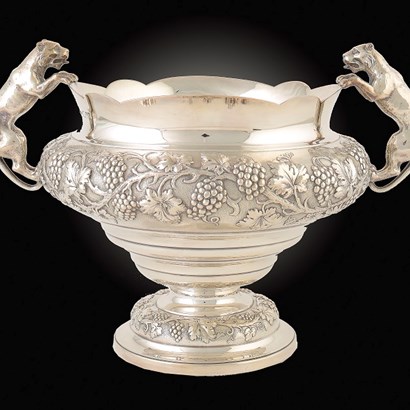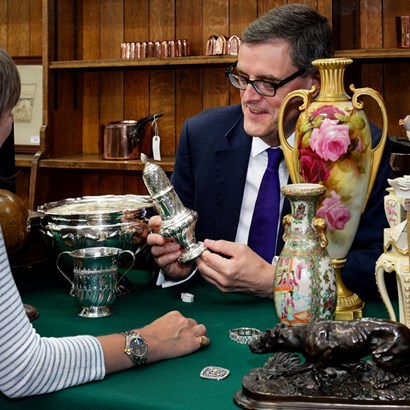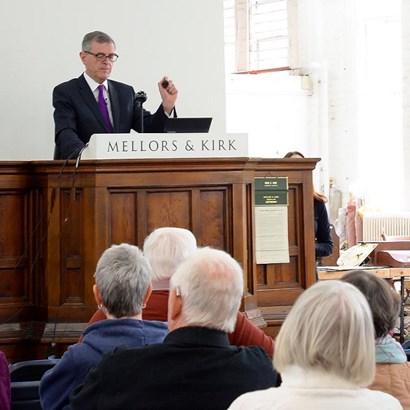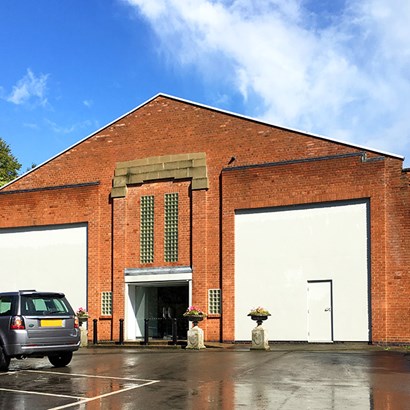Auction Insights
Portrait of General Hawley
Not everyone can say that their grandfather owned a castle but local woman, Susie Dean, who lived near Grantham, could have done so had she wished. Susie, who died in late 2015 inherited family portraits, furniture, silver and jewels, amongst many other items that had once graced several earlier family homes including historic Fingask Castle near Perth, Scotland. Now these are about to go under the hammer at Mellors & Kirk, forming a large part of the two day Fine Art Sale on March 22 & 23rd.
Piecing together their history and provenance has been very interesting, none more so than an oval picture of a solider. His identity long forgotten, no-one knew who he was until 20 years ago, when centuries of dirt and discoloured varnish were removed, revealing an old inscription which identified him as General Henry Hawley (1679-1759).
One of his comrades in arms described ‘Hangman’ Hawley – to use the nickname by which he is known to posterity – as “dreaded” and “hated” by his own men, who also thought him an incompetent commander. His foes, the Jacobites, were treated with great brutality by Hawley in the bloody aftermath of the Battle of Culloden in April 1746. Prince Charles Edward Stuart’s Jacobite army headed South, reaching Derby before being forced to retreat North. Hawley’s commanding officer and Captain General of the Army was Prince William Duke of Cumberland (1721-1765). He was nicknamed ‘Butcher’ Cumberland, but it was really Hawley who enthusiastically put into effect his orders. Both men would today be judged guilty of war crimes.
This is all the more extraordinary since Fingask Castle was home to the Jacobite Threipland family, strong supporters of Bonnie Prince Charlie. On four occasions over 400 years their castle and estate was forfeited by the crown because of the family’s loyalty to the Jacobite cause. During one such period Susie Dean’s grandfather Harold Gilroy, a wealthy Dundee jute merchant, bought and restored the great baronial castle as a family home. I wonder what the Threiplands would have thought if they had realised that amongst their portraits was an arch enemy gazing down from the walls!
Scottish historical portraiture such as this has taken on a fresh relevance as the parliaments of the UK and Scotland come to terms with their post-Brexit roles. The United Kingdom was seen by many in the early 18th century as a political construct in the same way that some people regard the EU.
There could well be keen competition for Hawley’s portrait from abroad and not just from descendants of the Scottish diaspora. It is interesting that a picture that is 300 years old may serve as either a warning or an inspiration, depending on your politics. It will be fascinating to see if, for example, the wave of popularity that has swept to power a class of politically illiberal leaders is reflected in art and poetry of today. If history is anything to go by, that will happen. Hawley was a monster but will that affect the value bidders are prepared to pay? From the opposing side, but equally unpleasant, Mellors & Kirk sold a portrait of Simon Fraser, Lord Lovat (1667-1747) a Jacobite who was notorious for being a turncoat, kidnapper and rapist. He was beheaded for treason after the Battle of Culloden. That didn’t stop his picture being bought at the auction by one of Scotland’s richest people for a multi-estimate price.
Hawley is depicted wearing armour, an artistic convention because by that time it was largely outdated but serves to identify the sitter as a man of action, despite his cravat and full-blown wig!
The artist, Sir John Baptist de Medina was the most important portrait painter of his generation to work in Scotland. He had a flourishing practice, charging £5 for a head-and-shoulders portrait such as Hawley’s. Most of his sitters were anti-Jacobites. The portrait is estimated at £800-1200, but I won’t be surprised to see it sell for more.
By complete contrast, a very rare woven silk armband was discovered at Mellors & Kirk this week. It was made for a young Notts woman to wear in celebration of the fall of Pretoria (capital of the South African Republic) to the British Army under Lord Roberts on 5 June 1900. Despite being well over 100 years old it is in very good condition but I can’t resist wondering whether it was worn by the girlfriend or perhaps sister of a man serving with either the Sherwood Foresters or Rangers. The Boer War was closely followed at home and in Nottingham several streets were named after Roberts or the battles or sieges of Kimberley, Ladysmith and Mafeking. Those who can remember the momentous day in 1982 when the Task Force sailed for the South Atlantic at the start of the Falklands War, will have a sense of the groundswell of popular support the army enjoyed at that time. The armband is a great piece of local history and it will probably sell for under £100, but I doubt I’ll see another one anytime soon – unless you know better!
< Back to Auction Insights



